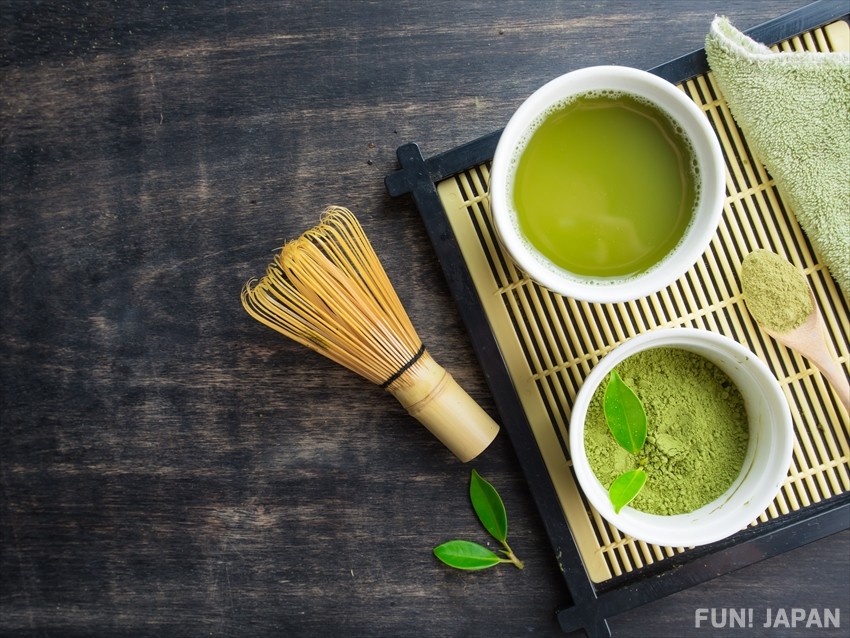
Sipped during tea ceremonies, enjoyed in cafes and now a common choice around the world, green tea is synonymous with Japan, but there’s much more to the nation’s appreciation of tea than matcha. Changing with the seasons, circumstance and region, tea is a staple of everyday life, be it barley, green or oolong.
Tea in Japan

Tea was introduced to Japan from China over 1300 years ago, and it was originally only available to the highest members of society. On his return from a trip to China, Eisai, the founder of Zen Buddhism, introduced the use of powdered green tea which was practiced particularly in Uji, Kyoto. Over time, tea became universally accessible and was used at home socially and tea ceremony developed its aesthetic focus.
While green tea was introduced from China, the production process and resulting flavours do differ. This is largely because while the leaves are pan-fired in China, they are steamed in Japan. Steaming creates a grassier flavour which can be a little more bitter than its Chinese counterpart. Green tea is by far the most popular variety in Japan, although black tea is growing in popularity. Some non-tea drinks are also extremely popular, including the use of barley and kelp, while some teas have extra ingredients such as roasted brown rice.
Ryokucha (緑茶): Green Tea
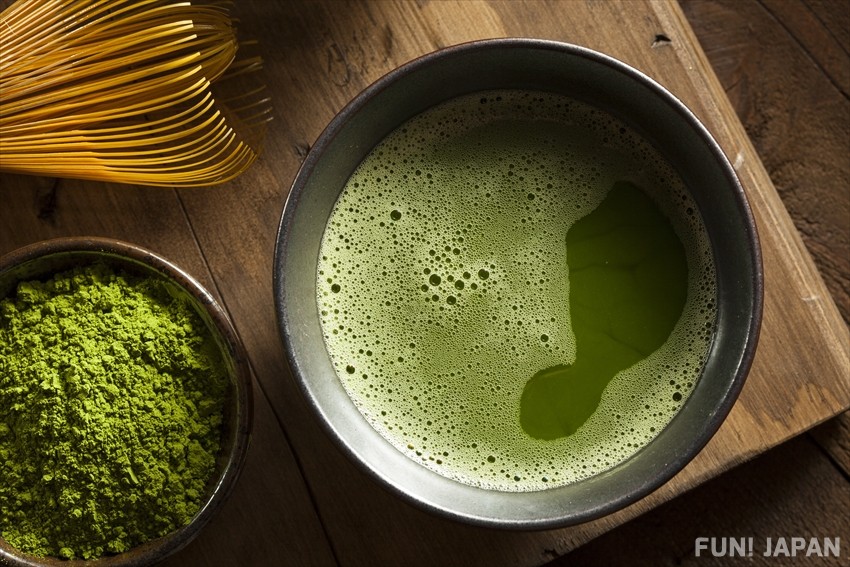
There are many kinds of green tea, called ryokucha (緑茶) in Japanese, varying in shade, strength and form. The most popular is matcha, but there are many other varieties you may have tried without realising they fall under the green tea family.
Matcha (抹茶)
More than simple green tea, matcha is considered a superfood and is used in drinks and cooking around the world. Matcha is a fine powder made of green tea leaves and has been enjoyed in Japan for thousands of years. While it was initially only enjoyed by the nobility, it eventually became commonplace, but still holds a special role in tea ceremony. The leaves used to make matcha are specially grown in the shade which results in the bright green colouring, as the plants produce more chlorophyll in these conditions. The leaves are picked, steamed, dried and ground. For high-quality matcha, the leaves are ground on a stone, although machine alternatives have been developed to save time.
Gyokuro (玉露)
Meaning ’jade dew’, this is the highest grade tea in Japan, using only the first leaves paired with a delicate processing. It is light, flowery and aromatic, with a hint of sweetness from the higher theanine levels caused by placing the plants in shade for at least 20 days before harvesting. This tea is best prepared using water at around 50-60°C.
Sencha (煎茶)
Sencha is the most common kind of green tea served in Japan, often as a staple alongside water in restaurants. It is a pale yellow-green colour and very light, making it a refreshing palate cleanser. Sencha infuses water with the green tea leaves, and comes in a few seasonal varieties. Shincha is the name for the first leaves of the year which are considered the most delicious. Hachijuhachiya Sencha is sencha harvested after 88 days after the beginning of spring. The temperature of the water can also impact the tea’s flavour, with higher temperatures creating a more astringent flavour, while around 65-75°C is considered the optimal temperature for a more mellow flavour.
Bancha (番茶)
Bancha, meaning common tea, is a lower grade form of sencha, coming from later crops and using larger leaves or stems which are usually discarded. This creates a stronger, more robust flavour, which makes it a popular choice to serve with food.
Hojicha (焙じ茶)
Originating in Kyoto only around a century ago, hojicha is a roasted tea that uses bancha or kukicha (similar to bancha but also uses twigs and stalks). The roasting creates a reddish colour with a refreshing and roasted flavour with little bitterness, with varying levels of heat used depending on the brand and region. Around 80°C is considered the ideal temperature for preparing Hojicha.
Genmaicha (玄米茶)
Genmaicha combines sencha with brown rice and has a distinct and nutty flavour. The rice is roasted and popped, with the starch giving the tea a sweeter, fuller flavour. As the addition of rice made this cheaper to produce it was once known as the ‘people’s tea’ but is now enjoyed by everyone, especially in the colder months. The ideal temperature for brewing genmaicha is around 80-85°C.
Wakocha (和紅茶): Japanese Black Tea
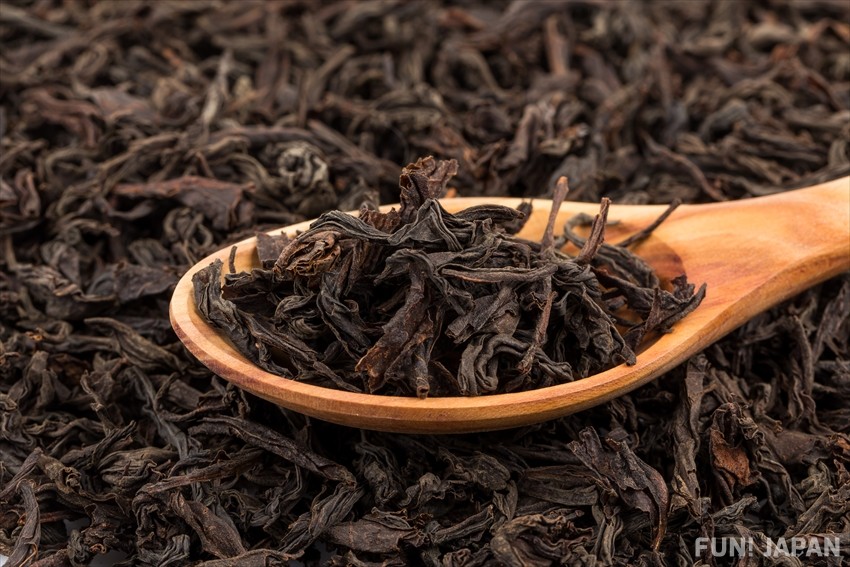
Black tea has only been produced significantly in Japan since the 19th century, with much of it being exported. While the same leaves can be used for both, the stage of picking and the processing creates different end products. For black tea, while leaves are cut and allowed to wither, before being set aside to dry and oxidise, which changes their chemical composition and the resulting flavour. In contrast, the oxidisation is prevented using steaming or pan-firing for green tea, creating a lighter taste. The tea plants cultivated for green tea vary a little from those used for black tea, and their unusual use for black tea is what lends wakocha its uniquely mild flavour. The ideal brewing temperature from wakocha is around 90°C.
Other Popular Teas in Japan
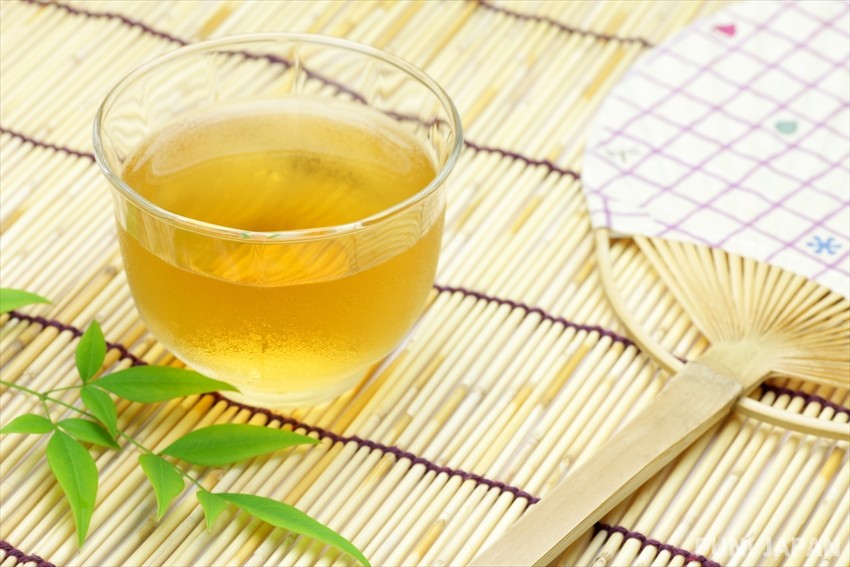
While green tea is by far the most popular option, there are many other teas to enjoy in Japan.
Mugicha (麦茶)
Made using roasted barley rather than tea leaves, mugicha is a caffeine-free option for tea lovers. It is especially popular in summer and is believed to have restorative and hydrating benefits, so you’ll often see it served chilled in restaurants and filling vending machines.
Kombucha (昆布茶)
A drink known as kombucha has shot to fame in recent years, known globally as a health-drink associated with detoxing. However, traditional Japanese kombucha is very different, using only hot water and either powdered or whole dried kelp to create a slightly salty drink. The version of kombucha known elsewhere, however, is entirely unrelated as it involves no kelp and instead uses a fermented mushroom culture mixed with tea made from tea leaves.
Oolongcha
With hints of peach, oolongcha is a light and refreshing tea that can vary between green and black teas. This is the go-to non-alcoholic drink in Japan, and is often ordered as a signal that someone is not drinking, usually at work events. It is also used as a mixer however, with peach-oolong being a popular low-alcohol option.
Jasmine-cha
Popular in Okinawa, Jasmine tea uses either green tea or oolong tea and adds jasmine flowers for a floral and slightly sweet aroma and flavour. Jasmine tea is sold in vending machines and convenience stores, but not seen as often in Japanese restaurants.
Top Tea Producing Regions in Japan
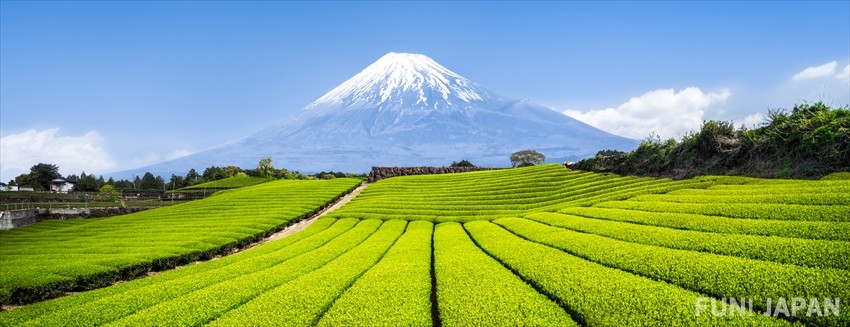
Tea is made across Japan, but there are certain regions with a strong reputation for growing high-quality leaves.
Shizuoka Prefecture: Japan’s largest producer
The most famous tea production area is Shizuoka, which is not far from Tokyo - perfect for a day trip to learn more about tea-making. This prefecture produces 40% of Japan’s tea, focusing mainly on sencha.
Kagoshima Prefecture: Japan’s Widest Variety
This region is Japan’s second-largest tea production area and has a wide variety of green teas available. As the climate is warm and humid, it allows for five harvests per year to be collected.
Uji, Kyoto Prefecture: Japan’s Longest Producer
Uji, just outside of Kyoto has one of the country’s longest historical connections to tea production. Here, they focus mainly on sencha, matcha and gyoroku, with tea exported worldwide and across Japan. Uji is a great day trip from Kyoto city and is also home to the temple pictured on the 10-yen coin.
Yame, Fukuoka Prefecture: Japan’s best Gyoroku Producer
This quiet region in Fukuoka is known for delicious Gyoroku thanks to good soil and cooler temperatures.
Japanese Tea Ceremony
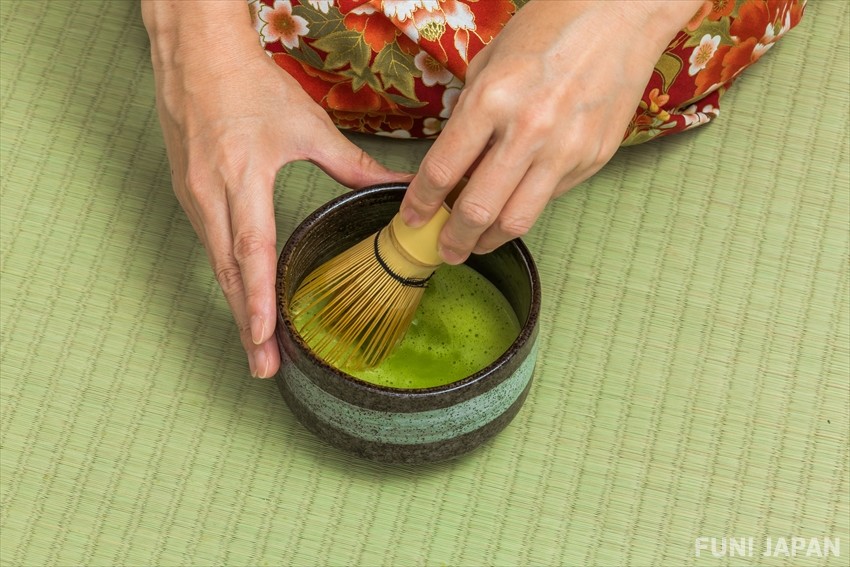
Japanese tea ceremony is often the first introduction many visitors have to tea in Japan. It is a beautiful ceremony, with kimono-clad women delicately mixing and serving the powdered green tea with traditional sweets called wagashi. The ceremonies are elegant and have many rules governing the way the matcha is mixed, served and drunk. Taking part or observing a tea ceremony is a popular activity when in Japan, and can be arranged at many major teahouses. For those simply looking to try matcha in a traditional setting, you can visit tearooms in many temples or gardens where matcha and wagashi sets are available for between 500-1000 yen.

Comments